Step into John Barrymore’s Secret Hideaway, as Magical as the Man Himself
sistercelluloid ♦ August 13, 2015 ♦ 10 Comments
Settle in, my dears, and prick up your ears. The tale I have to tell you may be the most John Barrymore-esque story ever. And it has absolutely nothing to do with alcohol.
In 1917, the 35-year-old actor was not yet a legend but was fast on his way, relying less on his exquisite looks and digging more deeply into his boundless talent. He’d just closed in John Galsworthy’s prison drama, Justice, with The New York Times gushing that he “played as he’d never played before, and so, by his work as the wretched prisoner, stepped forward into a new position on the American stage.”
But as was often the case, Barrymore was on shakier ground personally—in the midst of the first of his four divorces and recently rejected for military service in The Great War, due to varicose veins. Craving a quiet sanctuary, he instructed his leasing agent to “find a hideaway somewhere in the Greenwich Village area, a quiet place, the sort that would please a nun’s grandfather. Top floor if possible.”

Enter Juliette Nicholls, stage left. A wealthy American widow who’d been living comfortably in France before the war, she’d recently fled Europe for New York, purchasing a fabulous Greek Revival townhouse at 132 West 4th Street. Built in 1839, it was later renovated by Josephine Wright Chapman, one of the country’s first prominent female architects. Settling into her new home, Mrs. Nicholls wanted nothing more than to recapture the peaceful, unruffled life she’d enjoyed as an ex-pat in Paris years before.
Her first tenant was John Barrymore.
She didn’t say yes to him right away, mind you—she needed some convincing. (Even decades later, it still wasn’t unusual for landlords to insist on “No Actors or Dogs.”) But at the time, John was out touring with brother Lionel in Peter Ibbetson, and it doesn’t get any quieter than a tenant who’s almost never there.
But tours, like quiet summer evenings, don’t last forever, and once Barrymore was home, he was home. One night, he peeked into his somewhat startled landlady’s parlor and asked if she’d have any objection to him “fixing up the place,” which sounded innocuous enough. And once she nodded her assent, he was off and running. He decorated the bedroom in Victorian style, lining the walls with pale-pink striped paper, painting the baseboards a contrasting black, and trailing a floral burgundy rug across the length of the wide-beamed floor. Mauve taffeta curtains framed the high windows, a French marble fireplace carved with grape leaves graced the back wall, and a hard, narrow bed, fit for a monk, sat in the center of the room. “A bed for one—a bed that implies celibacy for a change,” Barrymore mused.
But the dear boy was just getting started.
Once his bed chamber was tucked away, Barrymore got to work on the rest of his nest. He gilt-painted the walls of the living room, then set out with a smudgepot to create an aged effect, christening his lair The Alchemist’s Corner. Wooden beams and stray bits of ironwork, refugees from monestaries, found new homes in bare ceilings and empty corners. A baby grand was somehow trudged up several narrow flights of stairs and decked out with a gold brocade tablecloth. A Chinese rug was flung in front of an imposing grey mantelpiece, and formal Lombardian chairs mingled with plump sofas to set a welcoming scene.
Barrymore hung a ship’s lantern in the skylight, but still, the place needed a bit more sun… so he opened out a small alcove, fashioning a bay window with panes of blue bottle glass he’d picked up in Italy.
For real light, though, you really needed to head up to the roof. While his landlady was traveling, he wrote to ask if he might take a few liberties, at his own expense: “I’d like to build a little stairway to it and place a few plants there, with perhaps a small pavilion in which I could sit when the locust blossoms come to the courtyard of Greenwich Village,” he suggested. “It would be like living in Paris in the twelfth century.”
Who could resist such a vision? Not Mrs. Nicholls…
Barrymore engaged a local carpenter to build a crooked little staircase, while he fashioned a banister from an old ship’s rope, fitting an ornately carved wooden door at the foot of the stairs. Then he asked the workman to build a little rooftop hut next to the skylight—but forbade the use of measuring tools. “I want everything crooked or off-center, like a Nuremberg poet’s home,” he told him. “Just guess your way along, old, man, as we all do about most things.” He must have guessed right: the lopsided little lean-to, which the actor wryly dubbed “New York’s first penthouse,” still stands almost a hundred years later.
Barrymore lined the walls with nautical touches, including a six-foot wheel from an old steamboat, and tucked a Franklin stove into the corner to cozy things up a bit.
But what’s a hideaway without, as he put it, “a few plants”? Here’s where his vision really took root.
For starters, Barrymore rigged a block and tackle onto the side of the building to haul up burlap sacks of prime Long Island topsoil. Thirty-five tons of it. Then came the 8-foot cedars, wisterias and cherry trees—the better to service the beehives. Hedges hovered around the perimeter, and flagstone walks meandered through stands of cypress. When Mrs. Nicholls returned home and made her way up to the roof, she was astonished, but touched, to find her famously hyper tenant serenely feeding the birds by an Asian reflecting pool.
And when floral tributes arrived from fans, Barrymore dragged the potted plants up to the roof to join the rest of the garden menagerie.
As it turned out, Barrymore’s life in The Alchemist’s Corner wasn’t entirely monkish; while he did manage some much-needed solitude, he also carried on an affair with Blanche Oelrichs, a self-styled poet who went by the pen name Michael Strange. In 1920, Oelrichs left her husband, married Barrymore, and hauled him off to Westchester, of all places. Two years later, he began his now-legendary Broadway run in Hamlet.
Not long after Barrymore was pried from his beloved lair, his little rooftop Eden—which had no place for pesky details like drainage or girders—began to crumble under the weight of its own fabulousness. Mrs. Nicholls’ new tenant, portrait artist Ben Ali Haggin, was awakened one morning by a lovely spring rain—pouring directly onto his face. A chunk of the ceiling had given way, and the rest of the sagging mess was threatening to follow. The landlady spent several thousand dollars to reinforce the roof and cart away tons of topsoil, never billing Barrymore a cent.
In 1987, writer Paul Rudnick leased the flat, and upon learning its history, was inspired to write I Hate Hamlet, about an actor who moves into Barrymore’s old apartment and, as he prepares to play the famous Dane, is hectored and haunted by the long-gone tenant. The play opened on Broadway in April 1991, closing 88 performances later, shortly after Nicol Williamson—who was even more eccentric than the legendary actor he was playing—deliberately stabbed Evan Handler during a dueling scene.

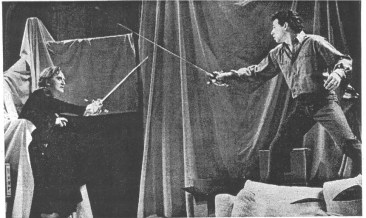
Whenever he was back in the city, Barrymore would sneak a peek at the place he may have felt most at home, and dream of the old days. And he stayed in touch with his benevolent landlady, a kindred spirit if ever there was one. “I was rather a strange, lost creature in the days when we knew one another,” he wrote to her in 1926, years after leaving his lair but likely still longing for it. “And you were unfailingly kind and sweet and wise.”

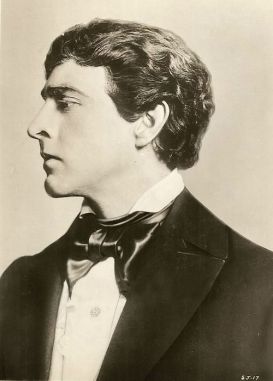

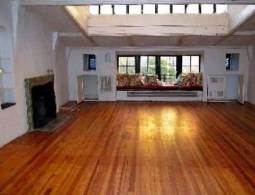
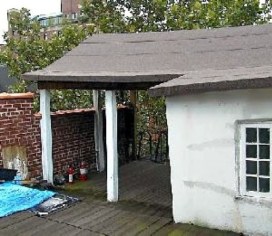
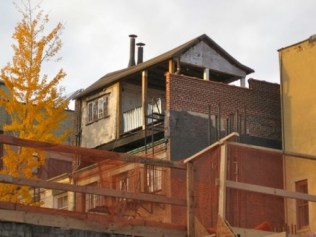
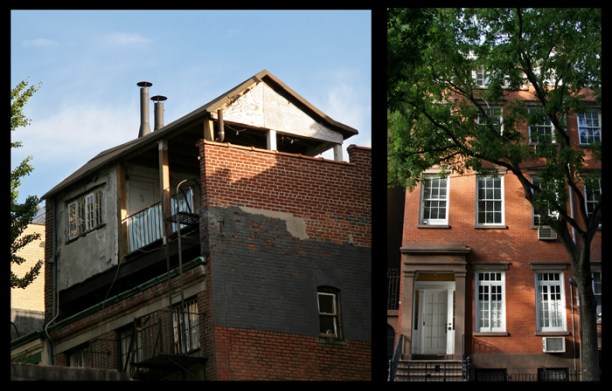
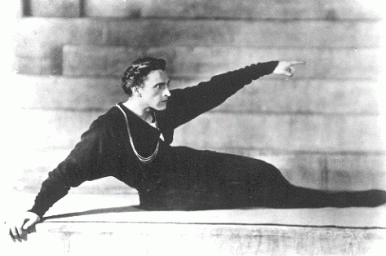

Thanks for the tale. Enjoyed it.
I don’t know whether to laugh or cry, but I certainly am in awe. What a Barrymore couldn’t do once the old mind was set.
Yes, where some of us might say, “A little roof garden would be nice,” a Barrymore hauls up 35 tons of soil and installs tree groves, beehives and reflecting pools!! Talk about go big or go home… 🙂
Fabulous post! This is quite a renovation but it sounds like something Mrs Nicholls loved, despite the cost.
I love how you wrote this.
Thank you so much, Ruth! I tried to paint a word picture as best I could! I only wish there were real pictures… and researching this, I totally fell in love with Mrs. Nicholls, and with John all over again…
What a fantastic post! I could imagine Barrymore’s little corner as you described it, and, girl, what a marvelous feeling! And what about this story about the I Hate Hamlet play? So crazy!
Thanks for such a fascinating post.
Don’t forget to read my contribution to the blogathon! 🙂
Kisses!
Le
Thanks so much for participating in the blogathon. I’ve only just got around to reading the entries now, and I must say that your fabulous post was highly worth the wait. I enjoyed reading about this. Thanks for doing this topic. Great fun. I’ve started writing my John Hurt post for the blogathon. It’s taking a while, but this one goes into a lot of detail doing “The Elephant Man”,so I want to make sure I’ve got all the information.
I’ve also decided to host another blogathon, that I would like to invite you to participate in. The link is below with more details
If you decide to participate, let me know.